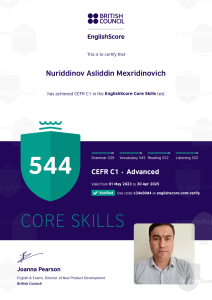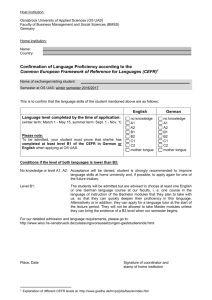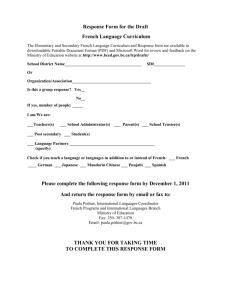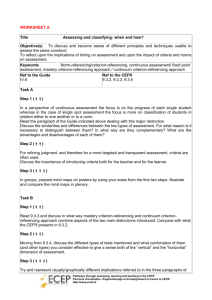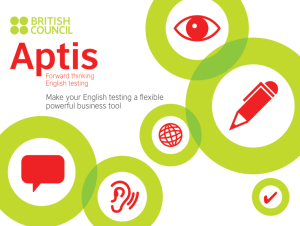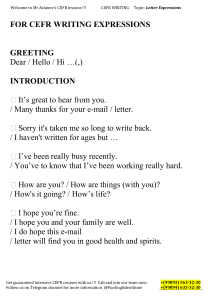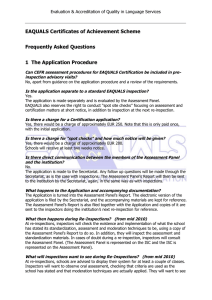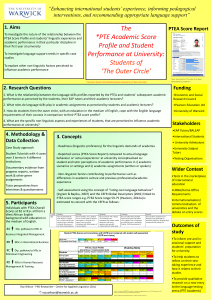Modern Languages Linking CfE Outcomes to other languages frameworks (Common European Framework of
advertisement
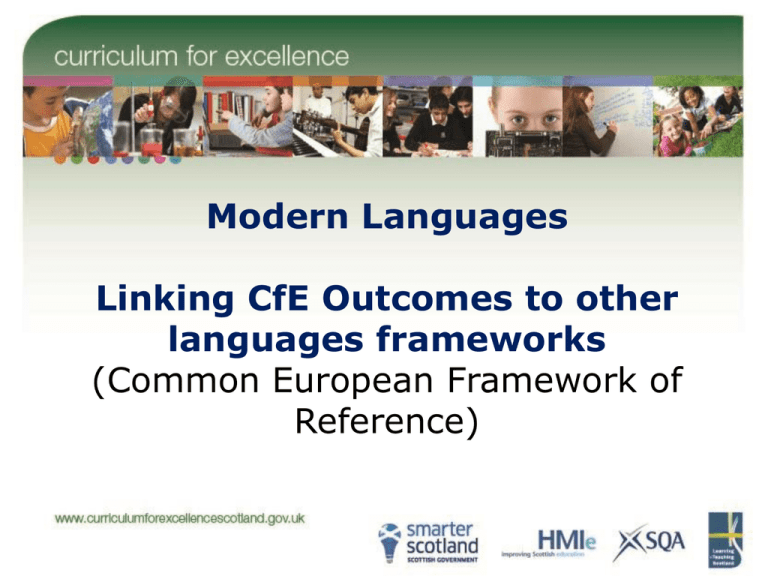
Modern Languages Linking CfE Outcomes to other languages frameworks (Common European Framework of Reference) Common European Framework of Reference for Languages (CEFR) Common European Framework of Reference for Languages The Common European Framework of Reference for Languages (CEFR) has been produced by the Council of Europe and it aims to provide a “comprehensive, transparent and coherent framework for language teaching.” The Framework also defines levels of proficiency which allow learners’ progress to be measured at each stage of learning on a life-long basis. Common European Framework of Reference for Languages The framework emphasises the most relevant contexts for language use particularly in the following areas: •to deal with the business of everyday life in another country, and to help foreigners staying in their country to do so; •to exchange information and ideas with young people and adults who speak a different language and to communicate their thoughts and feelings to them; •to achieve a wider and deeper understanding of the way of life and forms of thought of other nations and of their cultural heritage. A scale of Common Reference levels describes learner performance at six levels (from a ‘basic’ to a ‘proficient’ user) and five kinds of skill ( listening / spoken interaction / spoken production / reading / writing ). The descriptors encourage self-assessment and have been integral to the development of the European Language Portfolio. European Language Portfolio (ELP) The ELP in its current form consists of three obligatory components: • Language passport (summative) – which provides an overview of the individual’s proficiency in language at a given time and which records the owner’s self-assessment against the Selfassessment Grid in the CEFR • Language biography (formative) – which provides a reflective accompaniment to the ongoing processes of learning and using second languages and engaging with the cultures associated with them and which uses “I can” checklists for goal setting and self-assessment • Language dossier (experiential) – which offers the learner the opportunity to select materials to document and illustrate achievements and intercultural experiences. The six levels of CEFR: A A1 A2 B B1 B2 C C1 C2 Basic User Breakthrough Waystage Independent User Threshold Vantage Proficient User Effective Operational Proficiency Mastery
